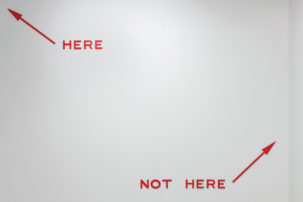Printed matter accompanying an exhibition or illuminating an artist’s practice still defines the machinery of the art world. With digital archives seeming increasingly unstable, paper continues to play a vital role in contributing to the record of how art is remembered and indeed made. But, in 2018, book publishing in particular is not getting any easier—particularly the publication of big, scholarly, well-designed and well-printed monographs.
In light of the recent bankruptcy of a publisher whose demise has left no less than eight Canadian art galleries in legal and financial limbo, one might even ask: are art books worth publishing any more in Canada?
The publisher in question is Black Dog; they were actually UK-based. But in recent years—thanks to its promises of low printing costs and high access to European distribution—Black Dog had become known in Canada for actively seeking out, and then publishing, art books for such major institutions as the Vancouver Art Gallery, the Musée des beaux-arts de Montreal, the Dunlop Art Gallery, the Art Gallery of Hamilton and the Ryerson Image Centre, among others.
“We would regard them [Black Dog] as a colleague,” says Susanne Alexander, publisher at Goose Lane, Canada’s oldest independent press and an occasional publisher of art books. “I feel sad for them because I think they were very ambitious in publishing highly illustrated books, and they had a very active Canadian list.”
Other Canadians express less pity, and more anger, over Black Dog’s final years, alleging that right up until the end, they were signing contracts and taking money from our nation’s art institutions to fund old printers’ bills. One thing is certain: key problems and potentials remain in terms of discussing the future of art-book publishing in Canada.
“I absolutely don’t think that [Black Dog’s] collapse indicates art catalogues are not viable or worth producing,” says Jonathan Middleton, a curator who of late has co-founded the art, design and publishing service Information Office in Vancouver. “I don’t think we’d make the same observation about a failed art gallery. Maybe the lessons here are that art catalogues are not always viable in the conventional book trade. Much like art, they’re an odd economy unto themselves.”
While Middleton and his Information Office colleagues work on a variety of art-publishing projects, from websites to vinyl LPs, he says books are a “time-tested” and “future-proof” technology that still offers many advantages in building “criticism and art history in the long term.” Other curators and art-world figures agree with him, even some of those who have been affected by the Black Dog bankruptcy.
“There is still a commitment to make the books happen from our side,” says Nigel Prince, director of the Contemporary Art Gallery in Vancouver. “There is something about a physical publication that operates at a completely different timescale to an event or exhibition,” he notes, and “there is something very importantly to do with scholarly activity” as well as offering exhibited artists “the main monographic publication” they might ever have.
The CAG has two book projects affected by the Black Dog bankruptcy: one on Julia Dault and the other on Kevin Schmidt. Both were partnerships with other Canadian galleries (the Power Plant and the Kamloops Art Gallery, respectively) and both were at the final stages of publication, with all printer proofs approved and signed off in late 2017. Prince was waiting for the books to be delivered when the Black Dog bankruptcy was announced in mid-January.
“We are not particularly hopeful to get any monies back,” says Prince of the Black Dog insolvency. “What we are trying to do is receive the design files … whereby we could just go to print here in Canada.”
“There remains interest in art books,” says Robin Metcalfe, president of the Canadian Art Museum Directors’ Organization and director of Saint Mary’s University Art Gallery in Halifax. Metcalfe points to the popularity of events like the New York Art Book Fair, and the growth of related fairs in Canada and beyond. He compares “the often proclaimed death of the art book” to “the death of painting and the death of photography—various things that have been claimed to die without actually dying.”
On a related note, art book fairs, along with online sales and bookstores that specialize in art publications, may be “a far more effective way or reaching a specialized readership, and I think that bodes well for diversity in art publishing,” says Middleton. Given the steep printing, permissions, purchasing and distribution costs associated with traditionally big, full-colour art catalogues, “some of the functions of the art book in the past are better done through e-documents and online presences Metcalfe claims, especially “simple provisioning of exhibition information and certain kinds of documentation.”
As a result, Metcalfe and some of his colleagues have been “experimenting with forms that move away from the art catalogue into something more like an artist bookwork… a parallel project to the exhibition. I think that’s a kind of logical move in response to the current circumstances of publication.” In parallel with Mathew Reichertz’s exhibition “Garbage” at Saint Mary’s University Art Gallery, which took the form of a graphic narrative installed on the walls, Metcalfe worked with Conundrum Press and Carleton University Art Gallery to publish a $20 graphic-novel version. It ended up being nominated for best experimental, unconventional or avant-garde comic at the Toronto Comic Arts Fair, reaching quite a different audience than just curators or gallery administrators.
Montreal’s Anteism has adapted to the constraints of today’s market similarly, by doing smaller-dimension books, smaller print runs, and even owning their own smaller printing shops. They recently published a book by Solange. Print on demand, at least for black-and-white books (tricky, still, for high-quality colour printing) is also an option Nigel Prince is looking at for the CAG.
Smaller enterprises like Middleton’s Information Office are venturing into distribution, long a challenge for Canadian catalogues. This longtime distribution issue is multifold: Canada is a large country, so shipping costs are high even domestically. Mainstream book distributors best service big retailers like Indigo, which are less likely to promote and showcase Canadian art catalogues. And, as in the case of Black Dog, the lure of international distribution, and the desire to use a catalogue as an international calling card, can lead some Canadians into detrimental arrangements.
While Metcalfe asserts that art catalogues are more “service to the public” than “a commercial venture,” one thing commercial publishers and art-world representatives agree on is that Canadian government support for art-related publishing is sorely lacking. “The profit margins are so small that without public funding it’s not feasible,” says Anne Bertrand, director of the Conference of Collectives and Artist-Run Centres of Canada. Yet “most art publishing projects don’t meet the criteria of the Canada Book Fund,” says Bertrand. And when she studied the Canada Council’s art publishing program, she found “less and less projects were eligible for that funding because the criteria were way too rigid.”
Indeed, “there are few publications that make it through the jury process” for art-book-specific funding, agrees Goose Lane’s Susanne Alexander. “We are constantly being told, ‘Your project is highly deserving, but there is no budget.’” The crux of the issue, says Alexander, is that art catalogues, still, “are not really designed to be commercial objects… they are caught between gallery publication and book. It’s a difficult territory to occupy.”
And it is particularly difficult territory, Middleton points out, when government might recognize the need for kicking in for some of the costs of contemporary art performances or contemporary art exhibitions, but not contemporary art publications.
Ultimately, there’s some hope this Black Dog bankruptcy can be a wake-up call for more sustainable art-publishing models in Canada. “Perhaps … this collapse, while painful and costly in the short term, may actually strengthen art publishing in Canada in the long term,” says Middleton. “Black Dog did many things right, but a lot of things wrong. I personally wasn’t happy with the quality of printing they were doing, and I think their books suffered in other ways by their rapid growth in this country. I think it’s far healthier for Canada to support a range of different publishers and producers and that publishing will be stronger for it.”

 Art books on display in the Art Gallery of Ontario shop in January 2018.
Art books on display in the Art Gallery of Ontario shop in January 2018.







